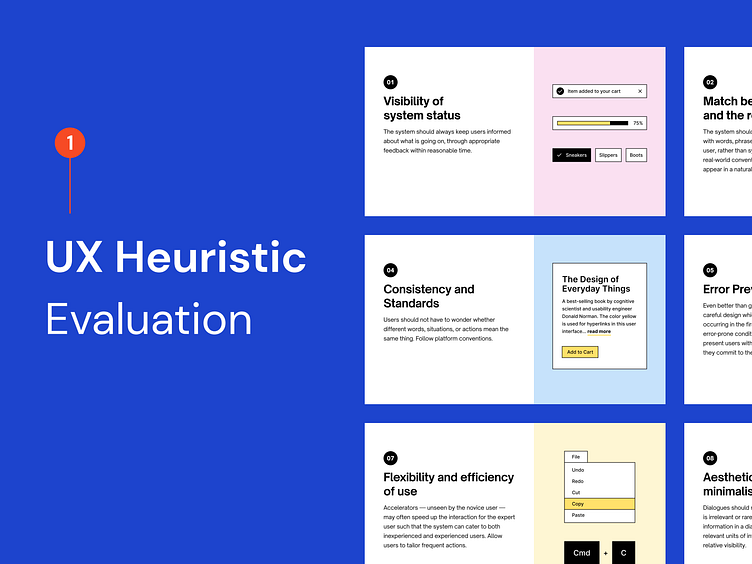UX Heuristic Evaluations
Mastering Heuristic Evaluation on 100+ Flows
Hey there!
I wanted to share with you a technique that I find incredibly useful for evaluating and improving the user interface design of products. It's called heuristic evaluation, and it involves assessing a product's design against a set of recognized usability principles or heuristics.
The benefits of this method are numerous, including identifying potential issues that could lead to user frustration, improving the overall user experience, and saving time and resources by avoiding a complete redesign.
I personally use Jakob Nielsen’s 10 Heuristic Evaluations as a guideline for my evaluations, and it has worked great for me so far.
You can find the heuristics on this link:
You can find more details here:
When should heuristic evaluation be conducted, and who should conduct it?
Heuristic evaluation can be conducted at any stage of the design process, but it's particularly useful during iteration. Conducting the evaluation earlier in the process allows for more feedback and more opportunities to refine the design.
When it comes to who should conduct the heuristic evaluation, it's important to have evaluators who are user experience experts. In fact, Nielsen's research found that about 75% of problems can be identified by just five evaluators. I personally recommend having at least 2–4 evaluators.
What elements of a product or system can be assessed using heuristic evaluation?
Before you start evaluating, it's important to identify what you will be evaluating. Will it be a feature on your website or app? Or is it a whole page or user task across different pages? Once you've identified the tasks, any type of wireframes, mockups, or prototypes can be used for evaluation.
What is the process for performing a heuristic evaluation?
There are two ways to conduct heuristic evaluation that I've found to be effective. The first way is to recruit a group of participants to perform the tasks you assign. The evaluators play the role of observers and fill out an evaluation sheet. The second way is to ask the evaluators to run the tasks and score the severity, describe the issues they faced, and provide their recommendations.
You can find more details here:
https://docs.google.com/spreadsheets/d/1d8JlLRoy0HkK9dgocLTMxM9tlt4Wfhev2KuRdxhQRL4/edit?usp=sharing
And Finally:
Once you have completed the evaluation, it's time to analyze the results. Prioritize the severity of issues found and discuss recommended solutions with the evaluators to ensure everyone is on the same page.
Finally, arrange a meeting with the project manager, list out your findings, and split them into different iteration stages. Remember always to keep your users in mind throughout the process.
Happy evaluating! :)


